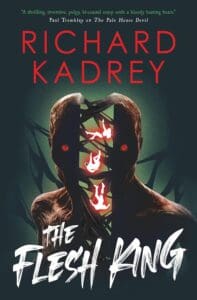
From the top…
ok, let’s start with a content warning! Fear not, I’m not about to start revelling in depravity or celebrating the morality crushing choices that some people make, but I am going to start at the basics.
The purpose of this guide is to inform and educate. I am very aware that a lot of writers and readers hold dear to their roots in TTRPG’s (That’s Table Top Role Playing Games) and will already be fully versed in the mechanics, industry and pleasures available to fans of this frankly massive world. I aim to dispel abbreviations with a mighty sword of clarification, and answer those questions you dare not ask because you feel you ought to already know! To the hells with what you ought to know, I say. Join me, weary traveller, and I shall bring thee up to speed.
What is a table top Role playing game?
Although there is a healthy clue in the title, let me elaborate. A role playing game is one in which the player plays a role. RPG also stands for Rocket Propelled Grenade but I am going to presume that if you’re reading this you can understand the difference.
One reason this industry has become so huge in fantasy/Science fiction in recent years is that the whole idea is based on fantasy. There are millions of different games out there and rule systems and themes etc. but you would be hard pressed to find a roleplaying game where your character works in a factory, then goes home to bed each night unsatisfied.
Generally, these games work by assigning one person as a GM (Games master) or DM (Dungeon master) other games have a variety of titles but they basically fulfil the same purpose. They present the world, its choices and opportunities to the player or players, and facilitate their input.

for example:
GM: You go through the door to find yourself in a long stone-bricked corridor that leads ahead into the darkness, on the wall to your left is a lit torch.
PLAYER: I will take the torch from the wall and continue up the tunnel
Different games and different people in the GM role will run games slightly differently and expect players to play accordingly. This brings me to the heart of these games, freedom. It is freedom that lights these games on fire and separates them from traditional board games. Different rule systems and play styles have varying priorities such as level of detail, story telling, number crunching and other aspects but the core mechanic is the same.
Play as your character, do as they would and have fun.
“How do I determine success?” I hear you ask. “I’m glad you asked.” I reply, satisfied in your level of keen engagement in my subject.
Dice
For those situations that cannot (or should not) be decided by the GM, dice are rolled and results are usually calculated by including a character’s statistics. (we’ll get to this stuff shortly, stay with me.)
Dice are named after the number of faces they have and therefore the range of results they could produce. i.e. a D6 is a standard six sided dice, the clickety clackety cube that we all know and love.
Then there is a D8, D10, D12, D20 and, my personal favourite, the D100 which is 2 D10’s rolled simultaneously, one representing tens and one units. This particular method is based on percentages and that is why I prefer it – if there’s a 42% chance of something happening we all kind of get that, right?
Different games use different dice in different ways but the basic premise of rolling dice and including statistics to determine the outcome is universal.
For example:
GM: you come to the end of the tunnel, there is a chasm before you. On the floor is a crumpled and unsigned health & Safety waiver. On the opposite ledge of the 2 meter void is a shiny chest, bursting with golden coins.
PLAYER: without hesitation or insurance cover I will leap across the chasm.
GM: roll the dice and add you “Jump” skill level, minus 1 for you blatant disregard for safety protocols.
PLAYER: *rolls* and subtracts 1… I have succeeded!
GM: and here is you reward…

Character sheet
A character sheet is where the aforementioned skill levels, statistics, and bonuses etc. are written. This is where a character is recorded and altered as the game continues. Another appeal to these games is that characters can improve, and be customised, again its all about freedom! Different games have different levels of detail on this front, some insist on lengthy back stories and motivations, some are merely boxes containing numbers that affect dice rolls. One thing that might come as a surprise to the humble noob (short for newbie, i.e. new to this world) is that in many TTRPG’s characters can survive and develop between games. Campaigns (a series of games in the same world or based around the same story) can last a handful of games or, in some cases, years. There is potential for campaigns to be endless. This allows for a rich and nuanced world that has been created between players and GMs. in-jokes, legendary or laughable exploits and self perpetuating lore can give the world of TTRPGs a certain magic that is difficult to replicate in any other game experience.
Other accessories
The big thing here is miniatures. not all games have miniatures in mind and not all players like to use miniatures but they are an option and bring their own entire hobby with them. With miniatures (or minis as they’re lovingly known) comes things like battle maps, floor plans, city maps, 3d furniture and environments etc. etc. this part of the table top world has its own universe of model making, painting, army building and customising but for the purposes of this guide these are generally used for realistic positioning in combat and adding an extra layer of immersion to the scenarios that are being played out.
Another accessory is the GM screen. a screen that covers the GM so secret rolls and nefarious scribblings can occur without the players knowing. This may seem odd but if a character should not know about something, the GM may have to inform other players with clandestine notes or dice roll results to keep things realistic.
For example:
GM: you walk down yet another tunnel and began to tire of the same unimaginative examples. What is you character’s perception skill?
PLAYER 1: My character’s perception is 10, this gives me +1 to perception rolls
GM: *Rolls in secret, the player fails the skill test and does not notice the secret lever in the wall* Player 2, what is you perception skill?
PLAYER 2: mine is 12, +2
GM: *rolls in secret and player 2 succeeds *passes secret note to player 2 announcing the discovery of the secret lever*
Had the rolls not been made in secret, player 1 would have know he failed to notice something which is one hell of a strange sentence and breaks the immersion of the game. Of course, some players do not wish to be bogged down with this level of detail and have a more laid back approach. There are many, however, who live for rules and correct protocols and enjoy the whole business of procedure and rule adherence…everyone has their own version of what is fun!

Closing thoughts
TTRPGs are big business these days and the idea of collaborative storytelling and playing games with friends either in person or across the gulf of time and space through magic, internet-based portals is common place.
I would, however, like to spare a thought for those early pioneers that paved the way. Those crazy 70s cats that would don their flares and meet up to slay dragons and seek treasure. They stood firm in the face of ridicule, brushed off the mobs accusations of devil worship, and did what they enjoyed despite the pressure to follow convention.
To those early role players and war gamers, I raise my magical goblet of thankfulness and acknowledge all that they have achieved!
Thank you.




Leave a Reply